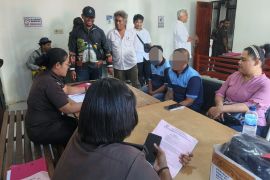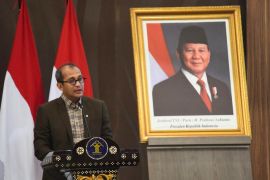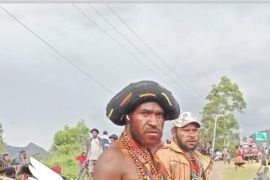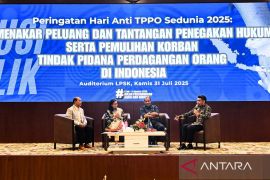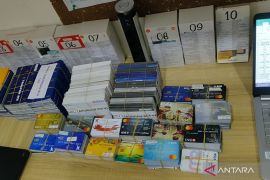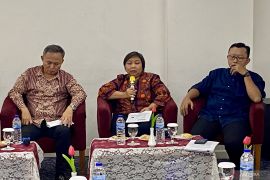Historically, until the end of the 19th century, Jeju Island was an exile island for criminals, but has become one of Korea`s best tourism locations that are attractive for both domestic and international travelers.Jakarta (ANTARA News) - Travelling to South Korea is considered incomplete without visiting the island, which has become the pride of the ginseng country: Jeju Island.
Perhaps, the vast majority of Indonesians only know or have witnessed the beauty of Jeju Island on their television screens through the recently popular Korean drama series.
Indeed, Jeju Island, which is always pictured as having a lush green scenery is often used as a shooting location for the countrys drama series, such as the Warm and Cozy TV series starring Yoo Yeon-seok as Baek Gun-Woo and Kang So-Ra as Le Jung-Joo.
However, as illustrated in any Korean drama series, Jejus air and climate is relatively pure, fresh and pristine.
The pristine natural conditions and the fairly clean air sparked have prompted mainland Korean residents to own a holiday house or even spend their retirement on Jeju Island.
A few young mainland Koreans even decided to quit their jobs and move to Jeju.
According to the records of the local government, the population on the island, which was earlier pegged at only 500,000 inhabitants, has doubled in recent years.
Historically, until the end of the 19th century, Jeju Island was an exile island for criminals, but has become one of Koreas best tourism locations that are attractive for both domestic and international travelers.
The uniqueness of Jeju Island
Jeju Island is located north-west of the Korean peninsula and is a self governing province.
The oval-shaped island stretches 73 kilometers across the east to west and 31 kilometers across north to south.
Jeju Island is a volcanic island with diverse and unique geographical features, even earning its nickname as "volcanic museum."
Uniquely, Jeju has about 368 small parasitic volcanoes known as Oreums and 160 underground volcanic caves that are scattered throughout the island.
Jeju is considered unique because many have a lot Oreum on a small piece of land.
Not only that, Jeju Island had also won three awards, namely as a UNESCO Biosphere Reserve site in 2002, a Natural Heritage Culture site in 2007 and was figured among the Global Geoparks Network in 2010.
Three things that are often encountered in Jeju
Jeju Island is also famous for three things: Black Stones, Wind and Women.
According to the tour guide Yoen Koh, who is a native of Jeju Island, these three aspects are often noticed by visitors at the island.
Stones, because it is a volcanic island, a lot of black volcanic rock is scattered around the island of Jeju and local people use these stones for building fences and even house walls with a sturdy arrangement.
Even at the 2002 Japan-Korea Football World Championship, the Jeju government utilized these rocks to build 11 giant "grandpa statues, which symbolized the number of players.
The Grandpa statues were made of black volcanic stones with a vertically oval shape and had eyes, nose and mouth, and the traditional communities in Jeju regard this statue as the guardian of the island.
The strong wind gusts in Jeju Island are also a common thing that the local government has taken advantage of this by building a wind power plant.
But the eastern part of Jeju Island has the most wind, it is no wonder that many wind energy rotor blades of the power plants are scattered across the landscape as far as the eye can see.
Lastly, the female population in Jeju is higher than that of men, which has resulted in women mostly working as the breadwinners for their families.
Jeju is also famous for female divers, who are called "Haenyeo" in the local language, which means sea woman, with this tradition beginning in the 17th century.
The usage of the term Haenyeo also emerged as the government applied taxes on marine products for male fishermen, but there was no tax applied for marine products collected by the women.
The Haenyeo are steel-minded woman, who look for sea shells as their livelihood, while the men choose to be fishermen.
Currently, there are only about 400 Haenyeos left in Jeju, which dominated by the older generation, meanwhile Jejus young women today prefer to work in an office.
The natural beauty of Jeju
The natural beauty of Jeju is not just evident at the edge of the sea shore, but can also be seen in Mount Hallasan, known as Mount Halla, which is 1,950 meters above the sea level and has become the islands landmark.
Mount Halla is known by local residents as Mount Yeongjusan, which means a mountain that is high enough to pull the galaxy.
The local Jeju residents worship Mount Halla, which is considered as the abode of the gods and spirits at the top of the mountain.
In the 1970s, the local government decided to convert Mount Halla into a national park because of the number of Oreum that had become a major attraction among geologists.
The mountain is famous for its vertical ecosystem of plants produced by varying temperatures along the mountain slopes.
The national park is home to more than 1,800 plant species and 4,000 animal species, including 3,300 species of insects.
Jeju Islands natural tourism is presented to the traveler as an endless experience and a true Korean drama series lover must set foot on the island to admire its unspoiled nature and beauty.(*)
Reporter: Ageng Wibowo
Editor: Heru Purwanto
Copyright © ANTARA 2016

